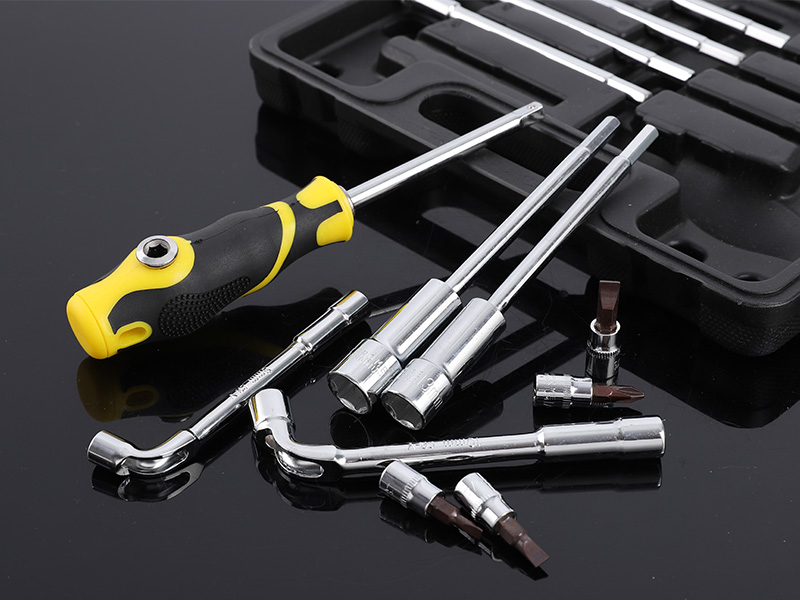

A wrench or spanner is an instrument used to give an ap […]
A wrench or spanner is an instrument used to give an applied mechanical advantage and grip in applying torque to rotate objects around their centers-usually nuts and bolts or retain them from revolving. A wrench can be a simple flat spring shaped tool having one or more handles, which may be placed on two surfaces of the shaft of a bolt or nut, or it can be a specialized tool with a blade that engages the nut or bolt and prevents it from turning. A wrench of the first type is called a quick change wrench; the other kind is known as a ratchet wrench, or a universal model, which has a screw thread that extends through the body of the nut or bolt and engages it in the body of the wrench. Either of these kinds of wrench may be either a straight shaft or cross-rod, and may have a variety of different shapes and sizes for working purposes.
One of the most common types of wrenches is the open-end wrench, which is designed to be operated by inserting one end of a thin steel pole into the hole of the nut or bolt. As the mechanism turns, the pole rotates an engaging member of the wrench close to the shaft. This action applies strong force to the nut or bolt and forces the two to rotate together against gravity, thus imparting a gripping force. In some cases, a special U-shaped sleeve may be provided to prevent slippage when the wrench is pulled back to its reverse position. A nut or bolt can also be fastened to the U-shaped sleeve at one end of the U-shape, while the other end is left free to rotate in the opposite direction.
Another common kind of wrench is the ratchet wrench, which is primarily used in tightening bolts and nuts. It is constructed of a chain and a couple of gears that can be locked together by a spring-like mechanism. The chain is usually made up of several pairs of thick nylon wires twisted together and connected by galvanized hooks. When the wrench is rotated by a turning motion, the chains are forced to move in a side-to-side motion with the ratchet, which exerts a wrenching force similar to that of a screwdriver's bolt-tightening force.

The ratchet wrench and the U-shape socket are both effective in their own ways, but when combined, the combination is even more efficient than either of them. A hex nut handle is another popular form of wrench, as it can fit most sizes of sockets and have a secure fit so that it does not slip off the handle. To attach the handle, the nut or screw is threaded and passed through the handle's hole. A screw jack is used to keep the handle firmly in place. It is essential for users to ensure that the screws are tightened enough, because a slip nut will allow the tool to come loose even before the job is completed.
Other types of wrench are available, including compression wrenches and fly-wire wrenches. These wrenches can be used to support and transfer pressure between two different structures: bolts and pipes. The compression wrench works with a cylindrical tube shaped spring, while the fly-wire wrench works with flexible tubes with ends that twist together. Both types of wrenches require a ratchet system in order to work properly, which involves a wire that grips the end of the bolt tightly, while releasing it when the screwdriver is turned. Welders commonly use the compression wrench, while mechanics often use the fly-wire system.
T-shaped handles are another innovative design of wrench, which makes it easier to operate. The design features one end that is a quarter turn away from the user, so that it can fit snugly into the hole in the pipe. These types of wrenches are usually made out of stainless steel or chrome and have a tapered opening that allows for a ratchet mechanism to be fitted onto the end of the tube. These kinds of wrenches are available in different sizes and shapes, which make them suitable for specific jobs.